AIZEN Bulletin
2015/2016
The AIZEN celebrated its 25th anniversary in 2016 and, in the last two years, our members all over the world have been very involved in the areas of research and publication, including about 40 articles that have appeared in our review Excavatio! These volumes reveal the breadth and depth of Zola and Naturalist Studies, with papers that explore new areas of research. The two volumes which came out in 2015 featured original themes, such as “Rurality Versus Urbanity in Zola and Naturalist Texts” (Vol. XXV), and focused on interdisciplinary and comparative approaches, as in the volume dedicated to “Zola, Naturalism and Neo-Naturalism in Europe and Abroad: Fiction, Photography, Film” (Vol. XXVI). The other two volumes (Vols. XXVII and XXVIII), which appeared in 2016, had as their objective to reconsider Zola, his life, his theoretical writings, his method, his views on writing and his influence on certain novelists who have assured his lineage, while at the same time distinguishing themselves from their model.
Since the AIZEN came to be in 1991, 17 international conferences have been organized in North and South America, Europe, and Asia. These conferences centred on Émile Zola and naturalism until 2006. After that, we began to touch on certain aspects of naturalism, to delve deeper and show the contemporary impact of this literary current. Thus, we organized conferences with the titles “Realism and Naturalism in Film Studies,” “Woman under Construction. Female Representation in 19th-Century French and Scandinavian Realism and Naturalism,” and “Worldwide Naturalism in Literature and Film,” during the last ten years. This is however the first time, for our 18th conference, that we will combine our research interest in Zola with that of another arguably naturalist writer.
The 2017 International Conference on “Zola, Mirbeau, and Naturalism” will be part of a series of commemorative events marking the Centenary of Octave Mirbeau’s death for which the initiative has been encouraged by the Société Octave Mirbeau, and its president Pierre Michel, to whom we owe a thank you. Mirbeau is often associated with naturalism because of his relationship with the members of the Médan Group, led by Zola, whom Mirbeau admired as a man of talent and courage. The Dreyfus Affair would bring the two together, with Mirbeau supporting Zola’s struggle in the name of justice. The orientation of this conference will place emphasis not on Mirbeau as such, but on Mirbeau viewed from the perspective of Zola and naturalism, in accordance with the goals of our association. In this connection, the conference is unique, since for the first time Mirbeau will be examined in the light of Zola, with emphasis on what unites and/or divides these two authors. An examination of their lifework will be carried out following approaches which will stimulate a reflection on the way naturalism itself is conceived.
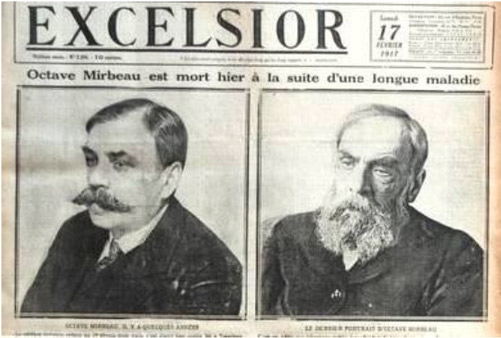
Mirbeau’s death on January 16, 1917
THE JOINT INTERNATIONAL AIZEN/UNIVERSITY OF DEBRECEN CONFERENCE IN 2017
Our next international conference “Zola, Mirbeau, and Naturalism” will take place in Debrecen, the second largest city in Hungary, from June 8 to 10, 2017. We will welcome approximately seventy participants from 17 different countries: Belgium, Brazil, Canada, England, Finland, France, Germany, Hungary, Japan, Poland, Portugal, Romania, Russia, Slovakia, Switzerland, the USA, and the West Bank. Papers will be presented on Zola, his involvement in journalism and art criticism, his conception of the naturalist approach to narrative fiction and drama, his intervention in the Dreyfus Affair, and his impact on the development of the cinema, with many of these topics considered in tandem with his contemporary Octave Mirbeau. Their parallel interests – in the areas of journalism, the arts, fiction, and current events – provide a wealth of material for interdisciplinary and/or comparative studies, from different theoretical perspectives.
All the sessions have been organized on topics dealing with Zola and/or Mirbeau, comparative studies on these authors’ relationship to naturalism, or on naturalism as a concept and as revealed in the works of other writers in various countries, with an emphasis on Central Europe and Brazil. Naturalist themes to be covered include medical discourse, polemics, and figures of trauma. Unique to this conference will be the focus on the press and the Fine Arts, since these are areas in which both writers were involved, in addition to the novel.
There will be two sessions on the Dreyfus Affair, a major media event that saw the collaboration of Mirbeau and Zola in their struggle for the development of full-fledged democratic ideals − the playing out in the real world of the representation of all classes and aspects of society they promoted in naturalist fiction and drama.

Open letter to Félix Faure published on January 13, 1898 in L’Aurore by Zola
A session on cinematic naturalism will feature papers not only on films inspired or adapted from Zola’s or Mirbeau’s novels, such as Le Ventre de Paris and Le Journal d’une femme de chambre, but also on a very recent Hungarian film, The Son of Saul (2015). Nemes’s conception for the film came from the book The Scrolls of Auschwitz, a collection of testimonies by Sonderkommando members. This session will form a link to Naturalist Film Night, when three films will be projected.
Our Honoured Guest at this international conference is Dr. Brigitte Émile-Zola, great grand-daughter of the novelist and member of the AIZEN since its founding. Brigitte Émile-Zola has always unconditionally supported our association, and her presence at this conference attests yet again to her loyalty. It will be the first time a member of the Zola family will attend an academic event in Hungary and we would like to thank Dr. Émile-Zola for honouring us in this way. Not only is she a doctor of medicine but she has also authored several studies based on family archives, such as Mes étés à Brienne (Éditions du Frisson Esthétique, 2008). Moreover, Brigitte Émile-Zola has been awarded, together with Alain Pagès, the Prix Sévigné 2016 for their volume Lettres à Alexandrine 1876-1901 (Gallimard, 2014), created with the collaboration of Céline Grenaud-Tostain, Sophie Guermès, Jean-Sébastien Macke and Jean-Michel Pottier. On June 9, Dr. Émile-Zola will give a presentation titled “Lettres inédites à Zola de Hongrie,” during the Naturalist Banquet.

Anna Gural-Migdal and Brigitte Émile-Zola
Three Keynote Speakers with expertise covering areas relevant for Zola, Mirbeau, and Naturalist Studies have been invited to the AIZEN/University of Debrecen International Conference. It is a pleasure to introduce Keynote Speaker, Éléonore Reverzy, Professor of 19th-Century French Literature at the Université Sorbonne Nouvelle-Paris III. As a scholar of both Zola and Mirbeau, she has dealt extensively in her numerous publications with them and their French contemporaries, such as the Goncourt brothers and Huysmans, and with the social and aesthetic questions that dominated during the span of their lives. Her authored books are La Mort d’Éros (CDU-Sedes, 1997), La Chair de l’idée. Poétique de l’allégorie dans Les Rougon-Macquart (Droz, 2007), and most recently, Portrait de l’artiste en fille de joie. La Littérature publique (CNRS, 2016), dealing with literary prostitution. She has also edited and co-edited collections of essays and produced editions of 19th-century French novels, including Germinie Lacerteux (Classiques Garnier, 2014). Éléonore Reverzy’s paper, titled “Mirbeau romancier pédagogue,” will attempt to clarify and reconcile the reception of Mirbeau’s scandalous novels with his reputation as a perspicacious critic.
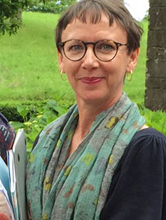
Éléonore Reverzy
As our second Keynote Speaker, we proudly announce Susan Harrow, Head of School for Modern Languages and Ashley Watkins Professor of French, at the University of Bristol (UK). She specializes in later 19th- and early 20th-century French fiction and poetry, and the interrelation of literary modernism and visual culture, this latter always of great importance to the AIZEN. She authored The Material, the Real and the Fractured Self: Subjectivitiy and Representation from Rimbaud to Réda (University of Toronto Press, 2004) and, more recently, Zola. The Body Modern: Pressures and Prospects of Representation (Legenda, 2010). Susan Harrow has been named Officier dans l’Ordre des Palmes Académiques, and served as the immediate past president of the Society of Dix-Neuviémistes. Her presentation, “Seeing Solitude: Alone Together in Zola’s Rougon-Macquart and Related Visual Culture,” will address the basic tension between the writer’s mandate to represent contemporary society, while revealing solitary, often lonely characters, and will take into consideration the works of contemporary artists, such as Manet and Morizot.
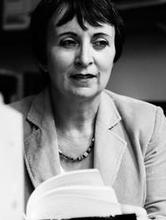
Susan Harrow
We heartily welcome our third Keynote Speaker, Miklós Konrád, research fellow at the Institute of History, Research Centre for the Humanities, Hungarian Academy of Sciences. Parallel to his historical publications, he served as editor-in-chief of two Hungarian-French dictionaries published by the Akadémiai Kiadó in 1999 and 2004. His numerous articles and volumes deal mainly with the identity dilemmas of acculturated Hungarian Jews. His book, titled Zsidóságon innen és túl. Zsidók vallásváltása Magyarországon a formkortól az elsö vilálgháborúig [Within and Beyond Jewishness. Jewish Conversion in Hungary from the Age of Reform to the First World War] was published in 2014 with a second edition in 2015. Since the fin-de-siècle period, late 19th and early 20th centuries, was the Golden Age of Hungarian Jewry, Miklós Konrád’s paper, “L’affaire Dreyfus dans la presse juive hongroise,” will bring insights as to how the revelation of antisemitism in France affected coreligionists in Central Europe.

Miklós Konrád
The conference will be held on the campus of the University of Debrecen, with all sessions taking place in the impressive main building, Egyetem tér 1. The Tribute to the Centenary of Octave Mirbeau’s death by Gabriella Tegyey, the Opening Speeches by Sándor Kálai and Anna Gural-Migdal, and the plenary sessions with keynote speakers will take place in the “Auditorium Maximum,” with all other sessions in rooms X and XI. The spacious rooms are equipped with computers and projectors. Conference registration will be on the third floor, where the Auditorium Maximum is located. Participants are encouraged to display their publications on Zola, Mirbeau, and naturalism in the main hall, near the registration table, with the material under constant surveillance. In collaboration with our conference, the University and National Library will curate an exhibition devoted to naturalism and naturalist writers in Hungary.
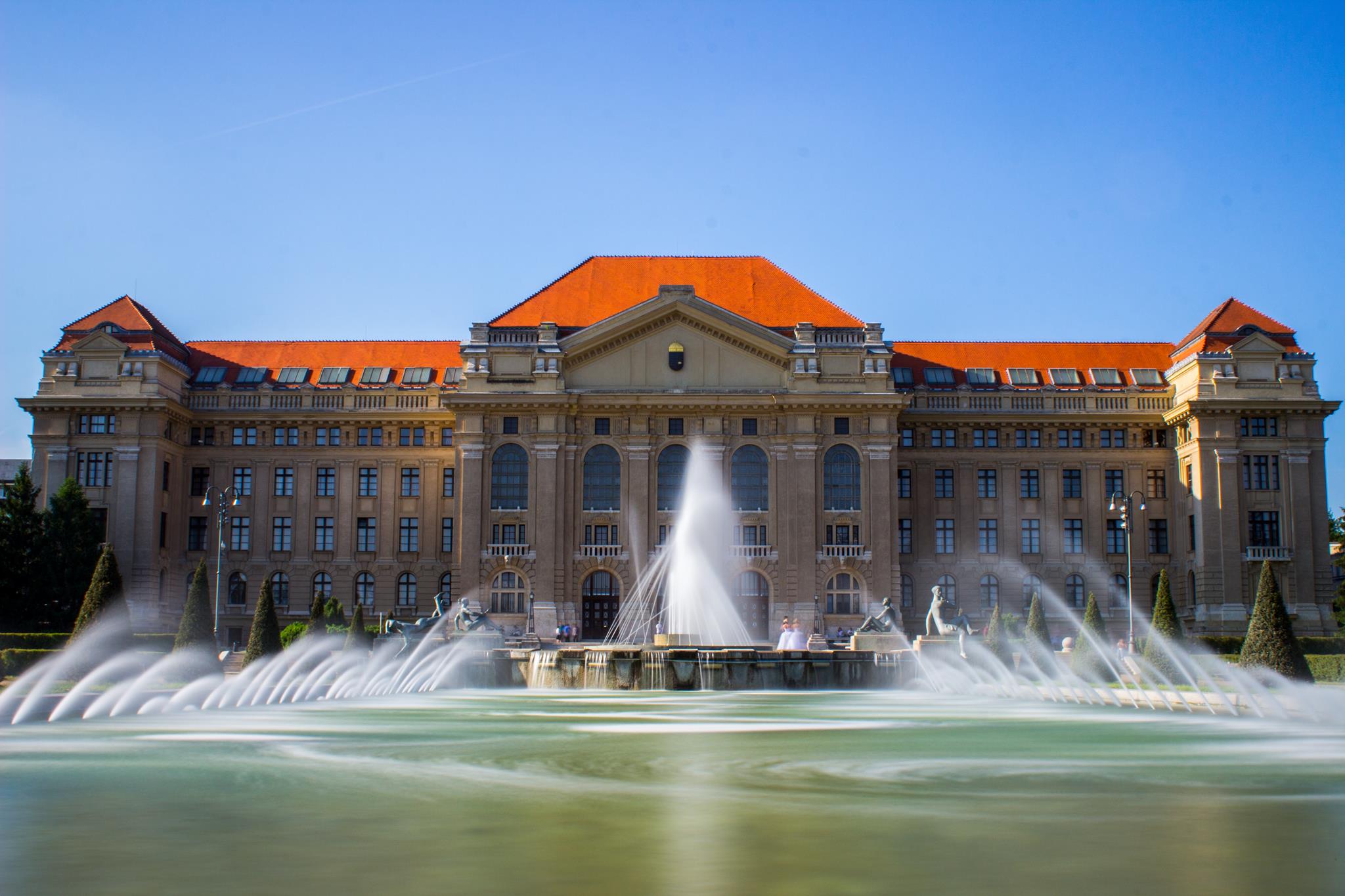
University of Debrecen, Main Building, Egyetem tér 1

Main Building, Entrance Hall, 3rd Floor

University and National Library
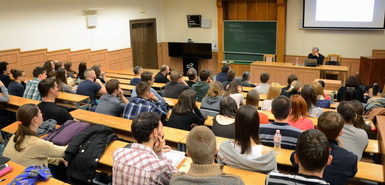
University of Debrecen, Main Building, Room X
For lunch, conference participants will be able to find refreshment at the university restaurant, located directly behind the Main Building where the conference sessions are held. Each meal consists of an entrée, a main course and a dessert, for 2000 forints. There will be a special menu for vegetarians.
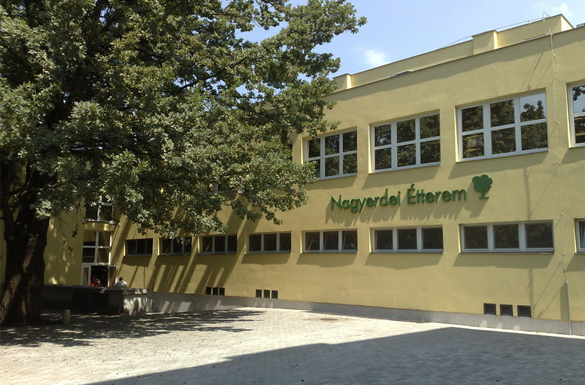
University Restaurant behind the Main Building
The first lunch will be part of the Opening Ceremony. This welcoming reception will take place in the Assembly Hall, on the second floor of the Main Building, just a few steps from room X. A buffet meal will be provided, with a glass of champagne. At the beginning of the ceremony, we will listen to speeches by Zoltán Szilvássy, Rector of the University of Debrecen, and other dignitaries. Our sincere thanks go the University of Debrecen and the French Institute of Budapest, for their support.
There are many people we are grateful to for the realization of our project of a conference in Hungary. We extend our thanks and deep appreciation to the University of Debrecen for welcoming the International AIZEN Conference and especially Zoltán Szilvássy, Rector, and Klára Papp, Dean of the Faculty of Humanities. Thank you also to the current Mayor of Debrecen, Dr. László Papp and to Szabolcs Komolay, Debrecen’s Vice-Mayor of Cultural Affairs. Special thanks go to Éric Fournier, French Ambassador to Hungary and Hervé Ferrage, Director of the French Institute of Budapest, for their support and interest in our conference.
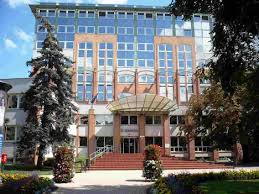
Debrecen’s new City Hall
We express our heartfelt gratitude to Sándor Kálai, Associate Professor in the Department of Communication and Media Studies and Co-organizer of this conference, with whom we have worked closely and whose hard work, efficiency and kindness have been deeply appreciated, and to Péter Szirák, Professor and Chair of the same department. A hearty thank you to local organizers, Gabriella Tegyey, Professor and Chair of the Department of French Studies, and to Anna Keszeg, Assistant Professor in the Department of Communication and Media Studies, who have assisted Sándor Kálai during the entire project. Many thanks to AIZEN assistant, Justine Huet, Assistant Professor, in the Department of English, Languages and Cultures (French section), at Mount Royal University (Canada), who has worked closely with us in the preparation of this conference. We would also like to thank the students of the French Studies Department and the Department of Communication and Media Studies, for the help they will offer during the conference. Lastly, we are grateful to Ádám Tiba, for overseeing arrangements for our group at the Hunguest Hotel Nagyerdő and to Bianka Szabó and Éva Gáll, from the Ibusz Utazási Iroda (Ibusz Travel Agency), for their help with travel advice and arrangements.
The Naturalist Film Night will take place on June 8, in Room XI of the Main Building, starting at 7:00 p.m. Justine Huet, a specialist in the field of Media and Translation Studies, will lead out in French and English, with Zsolt Győri, Assistant Professor of British and Film Studies at the University of Debrecen who speaks Hungarian and English, to assist her. Three of the films discussed in conference papers will be shown. The first, Le Journal d’une femme de chambre (France and Belgium, 2015; 95 minutes) by Benoît Jacquot, bears the title of a novel by Mirbeau and differs from the Luis Buñuel 1964 version, in its respect for the original text, but also in its emphasis on crime, horror, and monstrosity. The year it came out, it won the César Award for best film adaptation, best décors and best costumes. The silent black and white documentary titled Halles (France, 1929; 22 minutes), by André Galitzine and Boris Kaufman, appears to have taken its inspiration from Zola’s naturalist novel, Le Ventre de Paris, but conveys the optimistic revolutionary spirit of Soviet cinema of the 1920s and a strong belief in the worker. A very contemporary film, Son of Saul (Hungary, 2015; 107 minutes), directed by László Nemes won the Grand Prix at the 2015 Cannes Film Festival and was voted Best Foreign Language Film at the 88th Academy Awards Ceremony. It tells an unusual story set in Auschwitz, during the Second World War, and features eight different languages, making its soundtrack “an acoustic counterpoint” to the spare concentration camp décor.
.jpg)
Hungarian poster of Le Journal d’une
femme de chambre (2015)
.jpg)
Son of Saul (2015)
The traditional AIZEN Naturalist Banquet will be held in honour of Dr. Brigitte Émile-Zola on the evening of June 9, at a typically Hungarian restaurant called Flaska Vendéglő, in the city centre (Miklós Utca 4). The price for the banquet is 4000 forints per person. This includes an entrée, a main course, and a dessert. If we pay a bit more, we could have a glass of champagne. The menu features traditional Hungarian dishes, with accommodations for vegetarians.
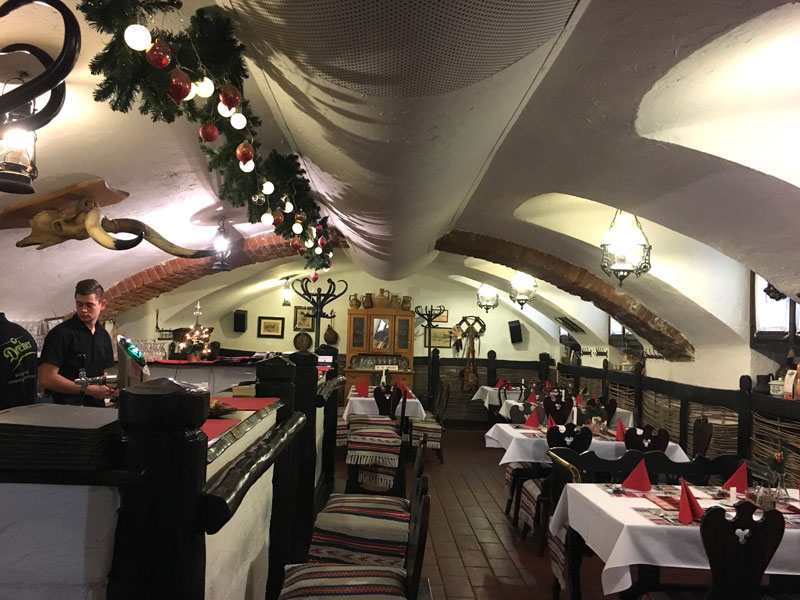
Restaurant Flaska Vendéglő

Restaurant Flaska Vendéglő
In the late afternoon of June 10, the closing of the conference will be marked by a glass of Hungarian wine, with a few words of thank you from Sándor Kálai and Anna Gural-Migdal. Afterwards, conference participants will be able to take advantage of a free evening to go downtown.
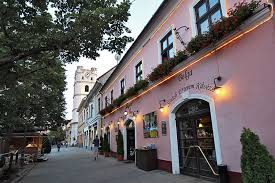
City of Debrecen
The AIZEN excursion at the end of the conference, on June 11, organized by the company IBUSZ, will consist of a bus trip to Hortobágy National Park and the city of Eger (pop. 54,864), one of the oldest cities in Hungary and the seat for the county (“comitat”) of Heves and for the district (“jarás”) of Eger.
Hortobágy is the largest national park in Hungary. The park was created on January 1, 1973, on a 52,000-hectare property; It was then progressively enlarged, and now covers an area of 80,000 hectares. In 1979 it was named a UNESCO world biosphere and it has been registered since 1999 as a world heritage site with the name “Hortobágy Natural Park – the Puszta.” This puszta (Hungarian steppe) shelters typical fauna: Hungarian cattle, water buffalo, wild horses, Racka sheep and the great bustard.
As part of the visit, participants will become familiar with the cultural and natural values of the Puszta during a 90-minute horse-drawn carriage ride. We will be able to admire the grandiose landscape with its unique atmosphere and learn how stock is raised on immense open pastures: the grey cattle of Hungary, horses, and woolly pigs. During a demonstration by the equerry (csikós), we will appreciate the harmony achieved between man and horse and take note of the architectural environment of the Puszta, as well as the clothing, daily objects, and the work of a shepherd. The visit will end with a walk-through of the stables, the studio of master potter József K. Nagy, and an exhibit of carriages. Lunch in the Hortobágy Inn will follow. On the menu − Guinea fowl soup, a filled crêpe “à la Hortobágy,” beef stew, apple strudel.
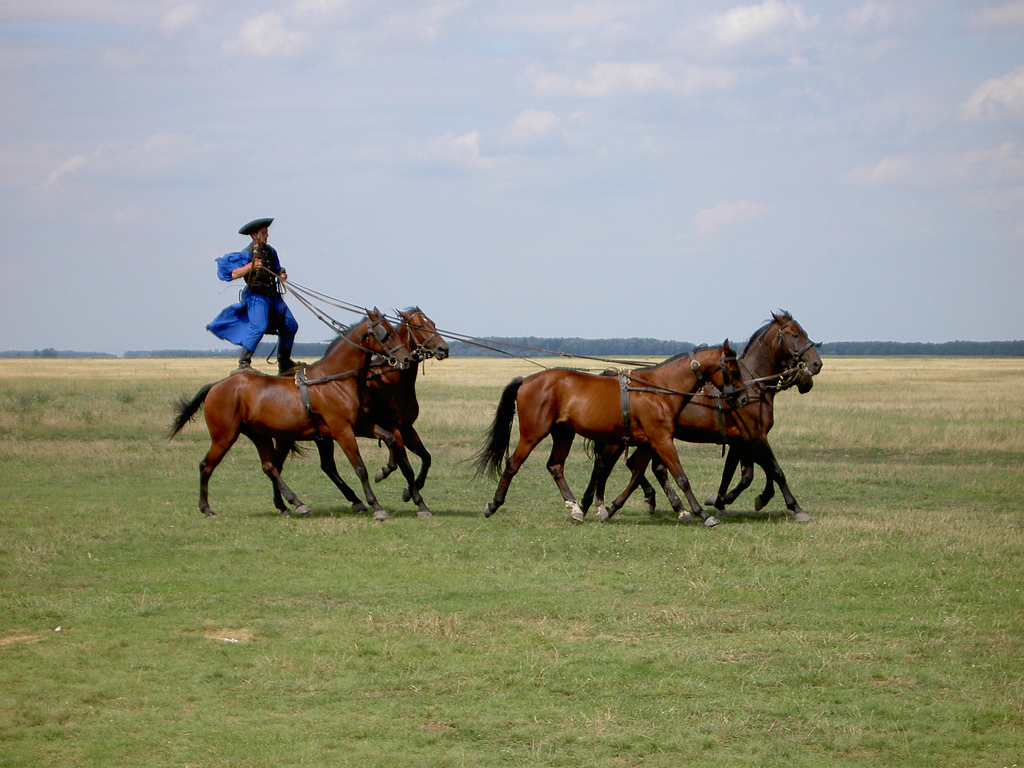
Csikós in the Puszta, National Park of Hortobágy
Then, we will board the bus again and make our way to the city of Eger, situated in the north of the country, to the east of Mátra, the highest mountain range in Hungary. Eger is known as much for its vineyards and its red wine “bull’s blood” (Egri bikavér), as for its unique architectural heritage: its minaret, a vestige of the Ottoman occupation; its medieval fortress; its basilica (the second largest in Hungary, after the one in Esztergom); but also for its numerous Baroque buildings.
We will begin with a guided walking tour of Eger, followed by a visit to the cave and the national wine museum István Pince és Nemzeti Bormúzeum, during the celebration of its 220 years of existence. There will be a wine-tasting and buffet of cold hors-d’œuvres (bacon, smoked ham, head cheese, sausage, smoked cheese, peppers, tomatoes, cucumbers, etc.).

Visit to the cave, Eger
The price of the excursion is 20, 500 forints per person for a minimum of 40 participants. The price includes the bus trip with guide, the tour and lunch at Hortobágy, the visit to the museum and the wine-tasting with cold buffet in Eger. For those who have not yet signed up, please contact Anna Keszeg: annakeszeg@gmail.com
A bank account number will be provided for each participant so that you may make a wire transfer in coordination with the travel agency. The deadline for payment is April 30, 2017.
For conference participants, we have blocked rooms at the Hunguest Hotel Nagyerdő and encourage everyone to stay in this hotel and to make reservations as soon as possible. The hotel is situated in The Big Forest, a calm location about a ten-minute walk from the university.

Hunguest Hotel Nagyerdő
The prices include: accommodation with half-board (buffet breakfast and buffet dinner), use of the hotel’s own thermal pool and sauna, and the VAT, but not the local visitor’s tax, which was 400 HUF/person/night in 2016. We have not yet received the exact figure for the visitor’s tax in 2017.
For reservations or for additional information, please contact Ádám Tiba who is responsible for our group arrangements at the hotel: info@hotelnagyerdo.hu Conference participants will enjoy a discount of 10%. To get the special conference rate when you make your reservation, just give Mr. Tiba the name of AIZEN. Here are the coordinates for this hotel:
Address: Pallagi út 5, 4032, Debrecen, Hungary
Telephone: +36 52 410 588
There will be no penalty for cancellations made 7 days or more prior to arrival. Conference participants who would like to share a room can make reservations for a Standard or Classic room with two beds. This hotel is a smoke-free property with amenities to make your stay comfortable: check-in from 2:00 p.m. and check-out until 10:00 a.m. Here is the web site for Hunguest Hotel Nagyerdő:
http://www.hunguesthotels.hu/en/hotel/debrecen/hunguest_hotel_nagyerdo/
The following services are offered at no charge: central vault at the reception desk for safe-keeping of valuables; room service; 24-hour reception desk (wake-up service upon request); free parking for the use of guests; free internet available in public areas of the hotel.
Some services require payment: bathrobe rental (220 HUF/person/day); outgoing telephone calls from the room phone (calls within the hotel at no cost); purchases made at the small gift shop in the lobby; tickets for the local public transport (may be purchased at the reception).
The cuisine at the hotel has been a favourite with guests for many years: home-style Hungarian dishes, served with kindness and special attention by the staff. The breakfast buffet includes vegetables, fruit, cold cuts, cheeses, omelette, French toast, yogurt, milk, muesli, etc. The dinner buffet includes 2 kinds of soup, 3 different main dishes, entrées, desserts, and salads. Breakfast is served from 7:00 a.m. to 10 a.m. and Dinner is served from 6:00 p.m. to 8:00 p.m. During the day and in the evening, the “à la carte” restaurant is available, where you can taste the delicious specialties in a cozy, friendly environment. If you make a prior request, this restaurant can accommodate special diets, like vegetarian, diabetic, lactose-free, gluten-free, etc.

Hotel dining room
There are plenty of recreational and entertainment facilities nearby. Debrecen is often called “the Capital of Eastern Hungary.” For those who enjoy water activities, swimming, and bathing, the City Thermal Bath, the Aquaticum Mediterranean Pleasure Bath, and the Sport Swimming Resort of Debrecen are only a few minutes’ walk from the hotel.
Hotel hot springs and SPA
NEWS ABOUT OUR MEMBERS
We have good news to announce. We heartily welcome Élise Cantiran, Chiu-Yen Shih, and Kristin Cook-Gailloud, who have become lifetime members of the AIZEN.
Congratulations to Chiu-Yen Shih, who is now Lecturer at the prestigious National Chengchi University in Taipei, Taiwan. Congratulations also to Midori Nakamura, who, since April 2015 is an Assistant Professor at the Municipal University of Arts, in Kyoto, Japan.
Hats off to Carolyn Snipes-Hoyt, Secretary-Treasurer of the AIZEN, and Associate Professor at Burman University, in Canada, who has been nominated Co-Chair of a department soon to be renamed Liberal Studies.
Elizabeth Emery, professor of French in the Department of Modern Languages and Literatures at Montclair State University has received a coveted award from the National Endowment for the Humanities. It will fund archival research and the completion of a book about 19th-century women and their struggles in the world of art and philanthropy. This is her third award from the National Endowment for the Humanities!
AIZEN President Anna Gural-Migdal recently participated in the 2016 Cerisy-la-Salle colloquium “Lire Zola au XXIe siècle,” presenting a paper entitled “L’héritage zolien dans le cinéma de Bruno Dumont.” Sincere thanks to the organizers, long-term AIZEN members Aurélie Barjonet et Jean-Sébastien Macke, for their warm welcome and for a successful conference.
We report other news that is difficult to communicate. One of our contributors to Vol. XXVI of Excavatio, Stephen C. Brennan, Professor of English at Louisiana State University, in Shreveport, USA, has sadly passed away. He earned his doctorate in American Literature at Tulane University, in Louisiana, studying under Donald Pizer, specialist in American Naturalism. Together with Stephen Yarbrough, Brennan coauthored Irving Babitt (Twayne, 1987) and he published a documentary volume (No. 368) on author Theodore Dreiser for the Dictionary of Literary Biography (Gale, 2012). He has published numerous essays on literary naturalism in journals and collections. From 1999, he coedited Dreiser Studies and continued in this role, with Keith Newlin, when it changed its name to Studies in American Naturalism. His last published article, on William James’s pragmatic philosophy as demonstrated in Theodore Dreiser’s novel The American Tragedy, can be read on the Excavatio website. Our condolences go to his family, colleagues, and friends.
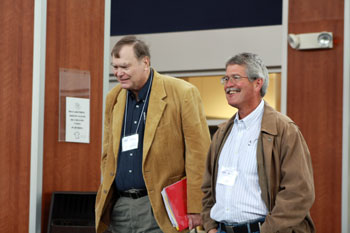
Stephen Brennan with Keith Newlin at the AIZEN/UNO Conference in New Orleans
It is with great sadness that the AIZEN announces the passing of Halina Suwala, eminent Polish scholar, specializing in the 19th-century French novel – Zola and Maupassant, in particular. After earning a law degree in Poland, she studied Romance Languages at the University of Waterloo (Canada) and was awarded her doctoral degree in 1974. For ten years, she was affiliated with the Université Paul-Valéry, in Montpellier, before returning to Poland, where she spent the rest of her career as Professor at the University of Warsaw. Among her monographs are Emile Zola (University of Warsaw, 1968), Naissance d’une doctrine, formation des idées littéraires et esthétiques de Zola (1859-1865) (University of Warsaw, 1976), and Autour de Zola et le naturalisme (Champion, 1993). Together with Henri Mitterand, she prepared Émile Zola journaliste. Bibliographie chronologique et analytique, Vol. 1 (Les Belles Lettres, 1968). She also edited collections of essays, including Naturalisme et antinaturalisme dans les littératures européennes du XIXe et XXe siècles (University of Warsaw, 1992), with Janina Kulczycka-Saloni and Danuta Knysz-Rudzka. She translated several of Zola’s novels into Polish and published numerous essays in journals and collections. The AIZEN was honoured by her collegial participation at the conference held in Edmonton in 2000, and again in Jaén, Spain, for Zola’s Centenary, in 2002.

Halina Suwala with Yves Chevrel at the AIZEN Conference in Jaén
Our members continue to be very active researchers and have published works of interest to scholars in the areas of Zola, naturalism, and 19th-century French studies.
Alain Pagès has come out with a new book, Le Paris d’Émile Zola (Éditions Alexandrines, 2016), in which he documents the various neighbourhoods described in novels, such as Les Halles in Le Ventre de Paris and the poor suburbs of L’Assommoir or the hills of Passy in Une page d’amour, including those experienced by Zola, as fascinating at the age of 18, and others as very stressful during the Dreyfus Affair.
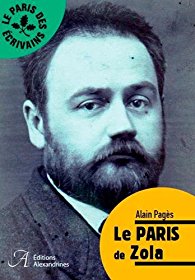
Éléonore Reverzy has published a new book, Portrait de l’artiste en fille de joie. La littérature publique (CNRS Éditions, 2016), exploring the 19th-century metaphor for literary prostitution. The high demand for printed material, combined with the rapidly developing market economy, proved instrumental in degrading the profession of writer from the distinguished status previously accorded men of letters, to that of simple hireling.
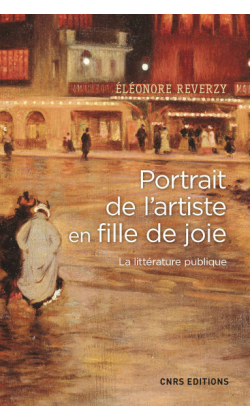
Émilie Piton-Foucault and Henri Mitterand have edited a collection of essays titled Lectures de Zola. La Fortune des Rougon (PUR, 2015), with articles on this early novel in the Rougon-Macquart series. Flaubert’s comment to Zola after reading this novel (Dec. 1, 1871), which the editors have placed as an epigraph to head their introduction, has given impetus to this unique project: “Je viens de finir votre atroce et beau livre! J’en suis encore tout étourdi. C’est fort! Très fort!”
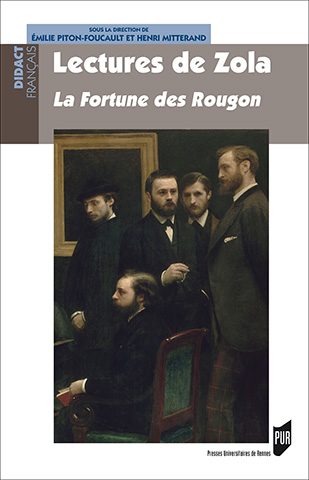
Guri Barstad, Professor of French Literature, and Karen P. Knutsen, Professor of English Literature, both from Østfold University College (Norway), have published a two-volume collection, titled States of Decadence: On the Aesthetics of Beauty, Decline and Transgression across Time and Space (Cambridge Scholars Publishing, 2016), with essays on this literary and cultural phenomenon which ran counter to naturalism. The title of the introduction, “Forty Shades of Decadence,” suggests its contradictory multiplicity, as reflected in the essays tracing its origins, its varied manifestations and its fortune beyond the 19th century. Among the contributors are several of our members, including Guri Barstad herself, Elizabeth Emery, Anna Gural-Migdal, Pirjo Lyytikäinen, Julia Przybos, and Riikka Rossi.

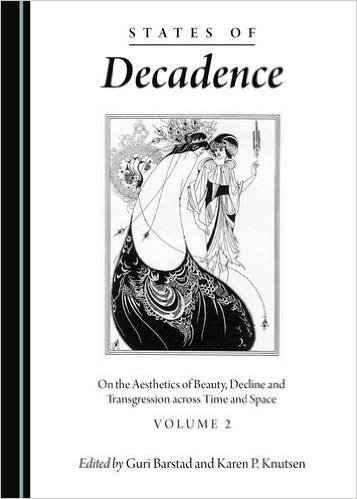
ABOUT OUR MOST RECENT ISSUE OF EXCAVATIO
We are pleased to announce that Vol. XXVIII (2016) of Excavatio, titled “Émile Zola and Naturalism,” is now posted and available to read on-line. It features articles on the historical and theoretical origins of the Rougon-Macquart, a new examination of the novels themselves from linguistic and cultural angles, Zola’s personal struggle for legitimacy through photography, and the wider impact of naturalism, even into the 20th century, including popular culture. Our on-line journal can be accessed by following this link:
https://sites.ualberta.ca/~aizen/excavatio/journal.html
As Editor-in-Chief of the review, Anna Gural-Migdal thanks all members of the Excavatio team, made up of Marie-Sophie Armstrong, Carolyn Snipes-Hoyt, Associate Editors, and Lisa Ng, Editorial Assistant, for their excellent work. Thanks also go to Philip Hoyt who posts Excavatio on-line.

(Courtesy of Brigitte Émile Zola)
Émile Zola and his children
CONCLUSION
2017 will soon be here and the AIZEN will mark its 26th year of existence. The Debrecen conference will bring together many Zola scholars, including those from the third and fourth generation, who make up a contingent of talented, young researchers. They will bring new blood to our association and insure its future and continuity. As a research group, the AIZEN has been able to disseminate knowledge and insights quickly, making available the contributions of these young scholars and thus building their profiles and helping them find their way in the academic world. Henceforth, we will make even more use of social media, Facebook and Twitter, for our communication and to connect with other Zola associations and 19th-century specialists throughout the world. A big thank you to Jeremy Worth, who is responsible for AIZEN’s Facebook and Twitter.
Be engaged and become a member of the AIZEN, so that you can participate fully in our association’s activities! We strongly encourage all scholars, including doctoral students, to submit articles for consideration to Excavatio. We need your financial support to produce the online publication of our international review, to digitalize our archives, to publish collections, and to organize our forthcoming conferences. Your loyalty to our association will enable it to flourish as it serves your interests.
Please keep in mind that AIZEN membership runs from January 1 to December 31. You can easily become a member (or renew your membership) by following this link:
We therefore look forward to our gathering in Debrecen this spring and wish you an excellent and happy 2017!
Anna Gural-Migdal and Carolyn Snipes-Hoyt, December 31, 2016.